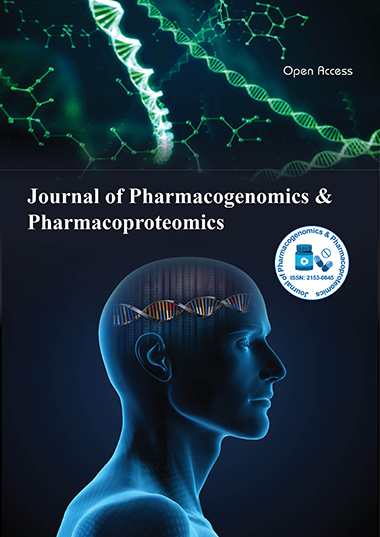Indexed In
- Open J Gate
- Genamics JournalSeek
- Academic Keys
- JournalTOCs
- ResearchBible
- Electronic Journals Library
- RefSeek
- Hamdard University
- EBSCO A-Z
- OCLC- WorldCat
- Proquest Summons
- SWB online catalog
- Virtual Library of Biology (vifabio)
- Publons
- MIAR
- Euro Pub
- Google Scholar
Useful Links
Share This Page
Journal Flyer

Open Access Journals
- Agri and Aquaculture
- Biochemistry
- Bioinformatics & Systems Biology
- Business & Management
- Chemistry
- Clinical Sciences
- Engineering
- Food & Nutrition
- General Science
- Genetics & Molecular Biology
- Immunology & Microbiology
- Medical Sciences
- Neuroscience & Psychology
- Nursing & Health Care
- Pharmaceutical Sciences
Commentary - (2022) Volume 13, Issue 3
Mechanism of Action of Nonsteroidal Anti-Inflammatory Drugs (NSAIDs)
Marcus Kristin*Received: 02-May-2022, Manuscript No. JPP-22-16786; Editor assigned: 06-May-2022, Pre QC No. JPP-22-16786(PQ); Reviewed: 20-May-2022, QC No. JPP-22-16786; Revised: 27-May-2022, Manuscript No. JPP-22-16786(R); Published: 06-Jun-2022, DOI: 10.35248/2153-0645.22.13.013
Description
Nonsteroidal Anti-Inflammatory Drugs (NSAIDs) have a long history, with Hippocrates and other physicians recommending willow bark for a variety of ailments thousands of years ago. The discovery of salicin as the active element in the willow plant, and the subsequent development of acetylsalicylic acid by the Bayer Company roughly two centuries later, set the tone for the current era of NSAIDs. Nonselective NSAIDs like piroxicam, mefenamic acid, diclofenac, and naproxen, as well as selective Cyclooxygenase-2 (COX-2) suppressing NSAIDs like celecoxib and rofecoxib, are still used to treat pain and inflammatory disorders today.
NSAIDs are still one of the most commonly prescribed and overthe- counter medications. Their ability to reduce fever has been widely documented since their discovery, and they have proven to be beneficial in managing pain and inflammation over time. It works well for acute and chronic orthopedic pain (osteoarthritis, ankylosing spondylitis, and rheumatoid arthritis), as well as postsurgical pain. NSAIDs have been shown to have potential in Alzheimer's, cancer, and Parkinson's disease, in addition to their typical usage. The majority of these researches take use of the benefits of treating the diseases' underlying inflammatory pathways.
Nonsteroidal Anti-Inflammatory Drugs (NSAIDs) are a class of pharmaceuticals with a wide range of structural and pharmacological characteristics but a similar molecular mechanism. NSAIDs are divided into two categories: aspirin and nonaspirin NSAIDs. Despite their comparable mechanisms of action and toxicity profiles, they interact with the cyclooxygenase enzyme in slightly different ways. However, a more widely used classification is based on structural differences and similarities. They are divided into salicylates (aspirin), aryl alkanoic acids (diclofenac, indomethacin, nabumetone, and sulindac), 2- arylpropionic acids or profens (ibuprofen, flurbiprofen, ketoprofen, and naproxen), n-arylanthranilic acids or fenamic acids (mefenamic acids, meclofenamic acid).
The enzyme cyclooxygenase is inhibited by NSAIDs, which is the principal mechanism of action (COX). Arachidonic acid is converted into thromboxanes, prostaglandins, and prostacyclins by cyclooxygenase. The deficiency of these eicosanoids is blamed for the therapeutic effects of NSAIDs. Prostaglandins promote vasodilation, elevate the thermostat set-point in the hypothalamus, and play a significant role in anti-nociception, while thromboxanes have a contribution in platelet adhesion.
The two isoenzymes of cyclooxygenase are COX-1 and COX-2. COX-1 is a protein that is found all over the body and is involved in gastrointestinal mucosa lining maintenance, renal function, and platelet activation. COX-2 is not naturally produced in the body; it is induced to do so during an inflammatory reaction. COX-1 and COX-2 are both inhibited by the majority of nonselective NSAIDs. COX-2 selective NSAIDs (such as celecoxib) target only COX-2 and so have a unique side effect profile. COX-2 selective NSAIDs should give anti-inflammatory relief without compromising the gastric mucosa, because COX-1 is the primary mediator for maintaining gastric mucosal integrity whereas COX-2 is primarily implicated in inflammation.
NSAIDs have a variety of actions that may help to avoid malignancies like Colorectal Cancer (CRC). COX-dependent or COX-independent prevention can be synergistic at different stages of this multistep process, with evidence for NSAIDs replacing Adenomatous Polyposis Coli (APC) function. Sulindac and indomethacin have been demonstrated to suppress cancer by inhibiting the gene Peroxisome Proliferator-Activated Receptor Delta (PPAR), which is normally controlled by APC. Changes in COX-2-related pathways are currently the focus of research.
The therapeutic value of Nonsteroidal Anti-Inflammatory Drugs (NSAIDs) in the treatment of acute and chronic pain and inflammation cannot be overstated. With the discovery of their therapeutic benefits in malignancies, it's also worth noting their pharmacological profile, particularly their known and expected molecular paths of action.
We definitely feel there is more to NSAIDs than we presently know, based on promising results in preclinical research with improved gastrointestinal effects associated with modified NSAIDs and potential anticancer action of NSAIDs. This chapter will now provide an overview of what is known and what could be done to expand the therapeutic potential of NSAIDs beyond the well-known pain and inflammation control.
Citation: Kristin M (2022) Mechanism of Action of Nonsteroidal Anti-Inflammatory Drugs (NSAIDs). J Pharmacogenom Pharmacoproteomics. 13:013.
Copyright: © 2022 Kristin M. This is an open-access article distributed under the terms of the Creative Commons Attribution License, which permits unrestricted use, distribution, and reproduction in any medium, provided the original author and source are credited.

